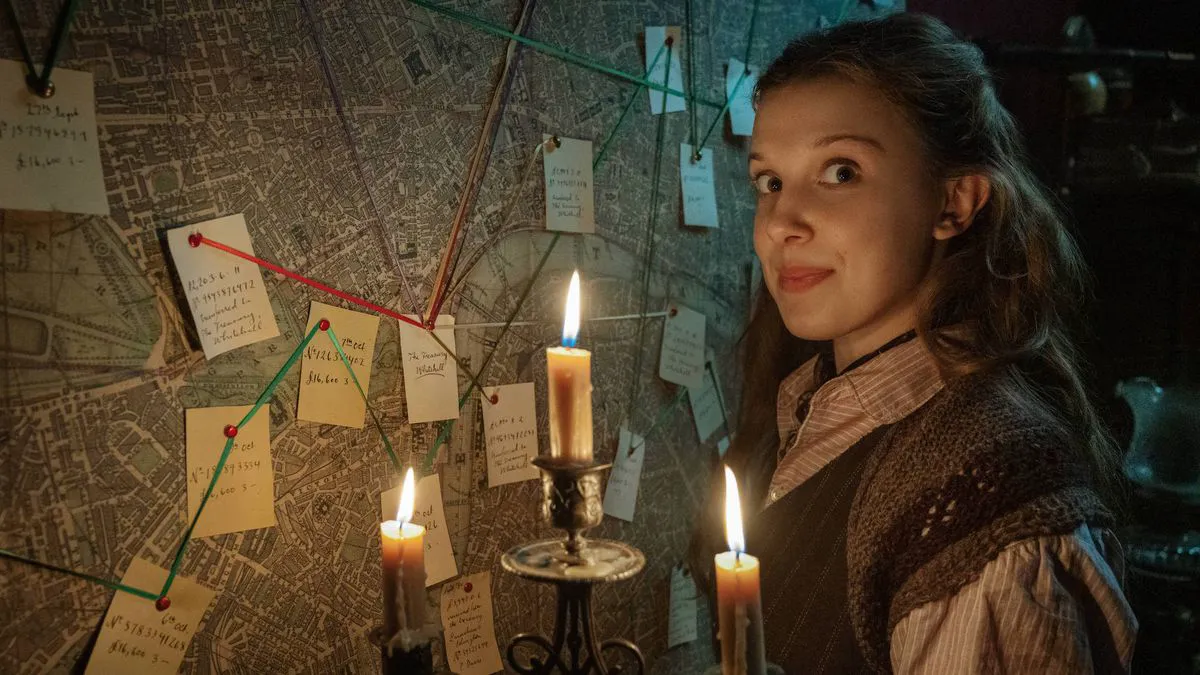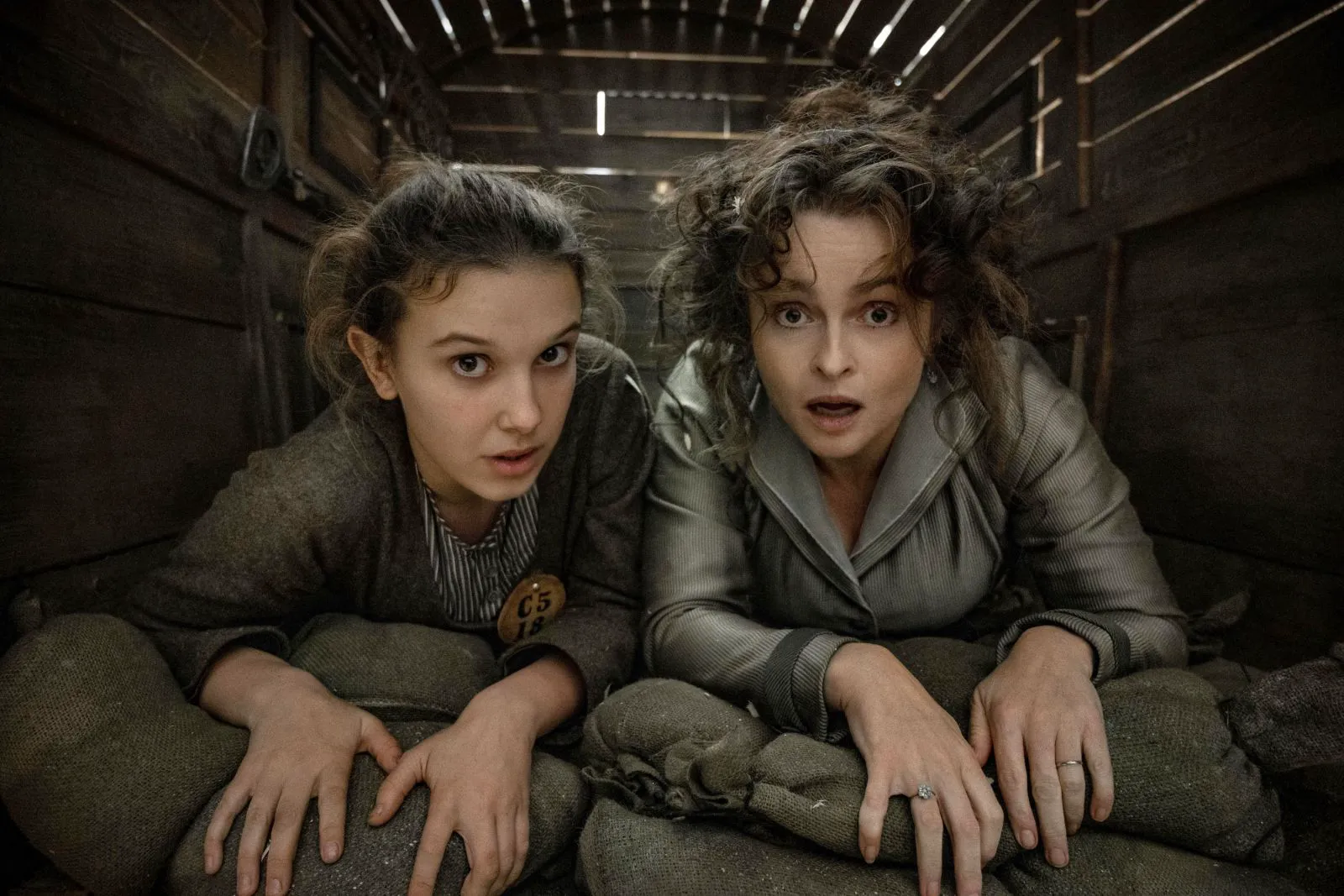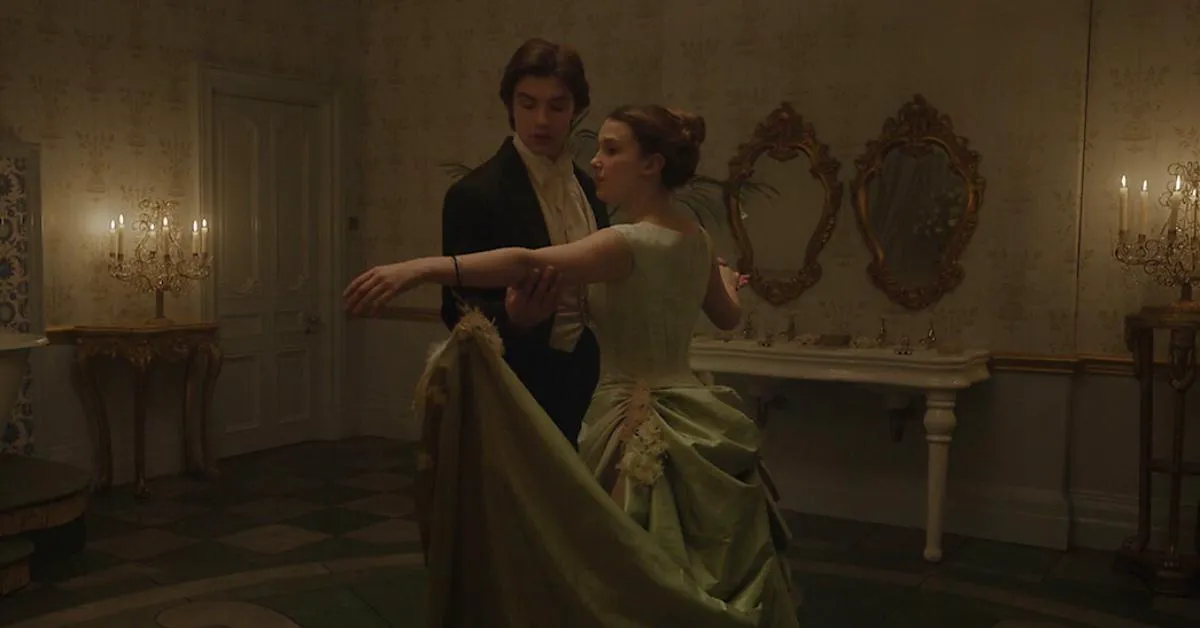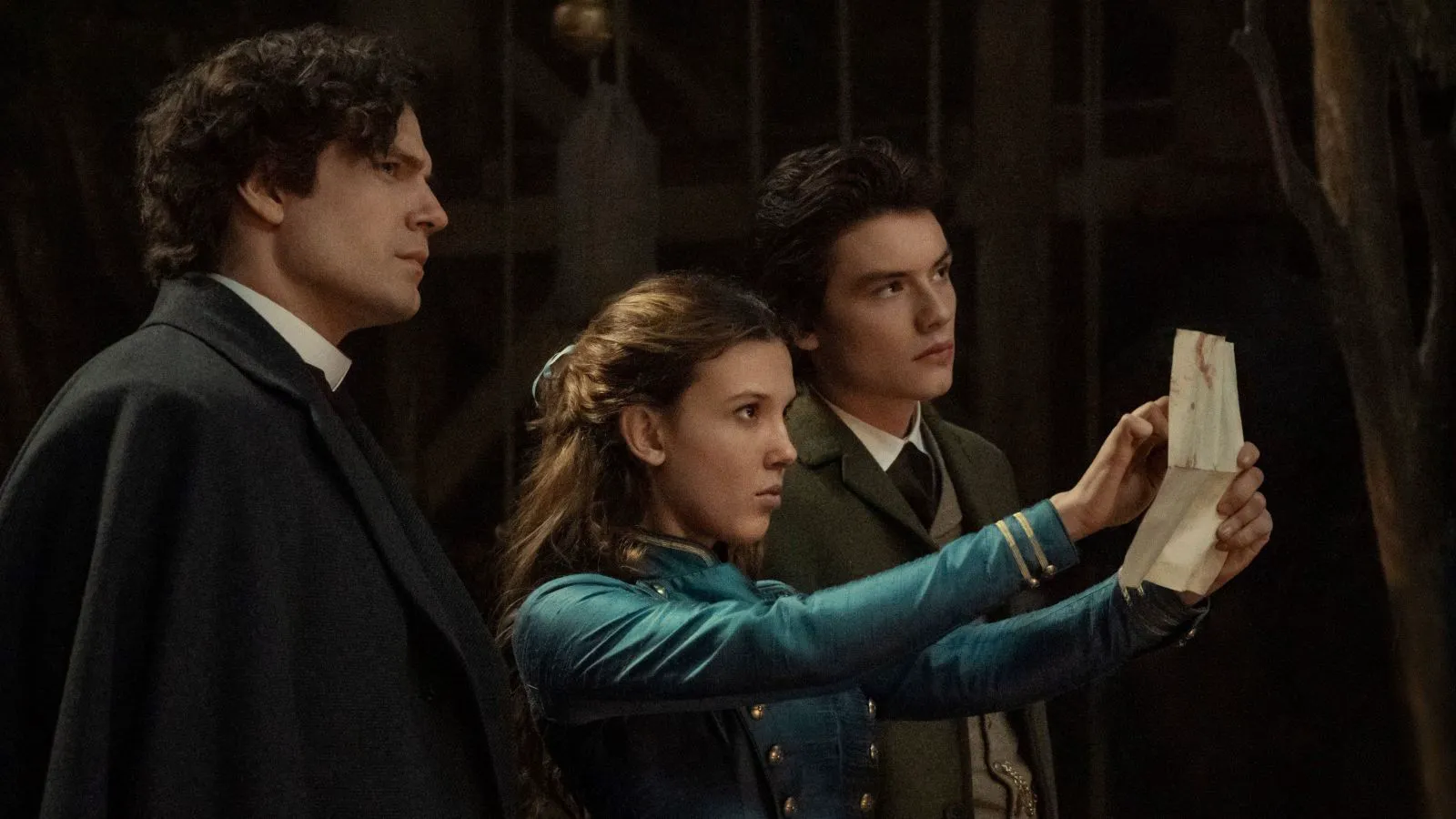Enola Holmes: Following in Her Brother’s Footsteps, Forging Her Own Path
Enola Holmes is echoing the legacy of her beloved older brother, and it’s not just about investigations, ciphers, or undercover work – though those detective gadgets are definitely part of the equation. Just as Sir Arthur Conan Doyle’s character took on a life of his own beyond the author’s control, Nancy Springer’s book series has become a mere starting point for Netflix’s creation. The first film rushed towards the credits, constantly glancing back at the source material (“The Case of the Missing Marquess”), but the sequel breaks free from literary constraints, instead inviting us to remember what was really happening in late 19th-century London.

Millie Bobby Brown as Enola Holmes in a still from “Enola Holmes 2”
Enola Holmes (Millie Bobby Brown) finally lands her first independent case: the young private detective must find the sister of a girl (Serrana Su-Ling Bliss) from a match factory. Sarah Chapman had a falling out with her superiors and fled the factory, facing accusations of theft. As is typical in Victorian settings, the disappearance of one small person turns into a major conspiracy. Enola longs for her mother (Helena Bonham Carter), develops a familial and professional bond with Sherlock (Henry Cavill), navigates her feelings for Lord Tewksbury (Louis Partridge), and saves those she can.

Helena Bonham Carter as Mrs. Holmes in a still from “Enola Holmes 2”
A Blend of Old-Fashioned Charm and Progressive Ideas
The main paradox of the Enola Holmes films is how the adventures manage to be both old-fashioned in form and progressive in ideas. Both films are comfortable teen movies in the best traditions of the '90s and '00s, with an almost complete absence of ambivalent characters: villains act badly (this time, David Thewlis is cast as the villainous superintendent), good guys suffer but fight back, and the time in between is filled with dancing, chases, surveillance, and harmless jokes. 19th-century London is a huge playground for all sorts of heroic hooliganism, which doesn’t stop for a minute in two hours. Millie Bobby Brown, in her voluminous skirts, deftly climbs the piping to the roof, runs away from constables (and, if necessary, can punch law enforcement officers), enthusiastically but without diligence learns to waltz, and flirtatiously addresses the audience, breaking the fourth wall. Addressing the audience informally is the equivalent of friendship, for which the screen is not an obstacle: who else but Millie is a role model for girls aged 12-14 today?

Millie Bobby Brown as Enola Holmes in a still from “Enola Holmes 2”
Feminism for Beginners
“Enola Holmes” easily and playfully fulfills the function of a primer on feminism for beginners, but at the same time uncompromisingly. There is no doubt that the film will drive conservative viewers to a frenzied rage with its blind casting, its freedom in its relationship with Conan Doyle’s legacy, and its demonstration of female strength (not only ideological, but also physical), but the 35+ audience can hardly be called the target audience for the project. Enola Holmes is an older girlfriend for schoolgirls, who succeeds in everything, even if she doesn’t know how to do much: the detective shoots a bow accurately and boxes fearlessly, but dances at a ball, a tight corset and social conversations cause almost insurmountable difficulties. Failures at a social event are not presented as a neglect of etiquette and gaps in femininity - Enola was raised by a completely different mother, and there is no trouble in this. Mrs. Holmes will appear again, and again briefly, but the tenderness in the connection between daughter and mother will be enough for the entire timing - the little magic of Carter and Brown. The film focuses in more detail on brother-sister relationships: Sherlock is not a powerful detective, but rather the ideal older mentor that one can only dream of at 14. The duo of Henry Cavill and Millie Bobby, on the one hand, looks ridiculous, on the other - charming in awkward disharmony. But Mycroft did not return in the sequel: Sam Claflin is the only one from the cast of the first film who went into the shadows, but perhaps not for long: a new continuation of the Victorian investigations has not yet been announced, but is predetermined.

Henry Cavill as Sherlock in a still from “Enola Holmes 2”
One can only sincerely rejoice that Netflix managed to create a niche franchise, and that girls have a favorite detective. Harry Bradbeer, the director and producer of the groundbreaking “Fleabag,” having worked with Phoebe Waller-Bridge, found the right key to talking to the younger generation, which, of course, will grow up better than us. Frantic pace, parallel editing, mischievous flashbacks and an eternal circus with dressing up - Enola, like her peers, simply cannot sit still, but has already begun to inevitably grow up. The film ends with a history lesson and a literal illustration of how one small step (not on the Moon, but in production) slightly changed the world in 1888. “Enola Holmes 2” is a film that is shamelessly straightforward and crystal clear, but perhaps this is exactly what a feminist fairy tale for girls should be. A little sloppy, out of breath, sentimental and romantic (it’s hard to imagine how many fanfics about Tewksbury have already been written and how many more will be): Enola is a fantasist and vividly invents a world that was not, but in which you really want to believe.